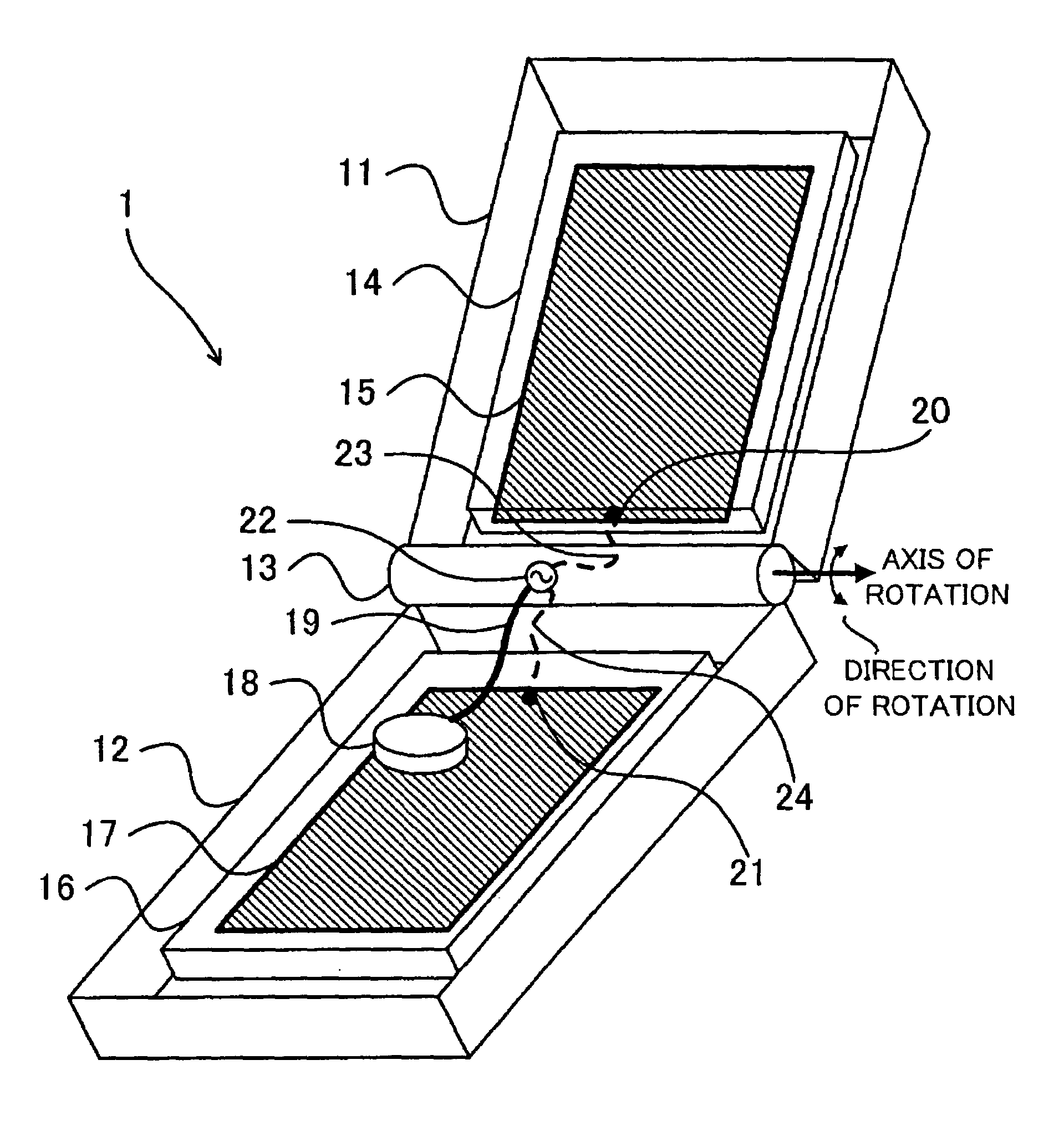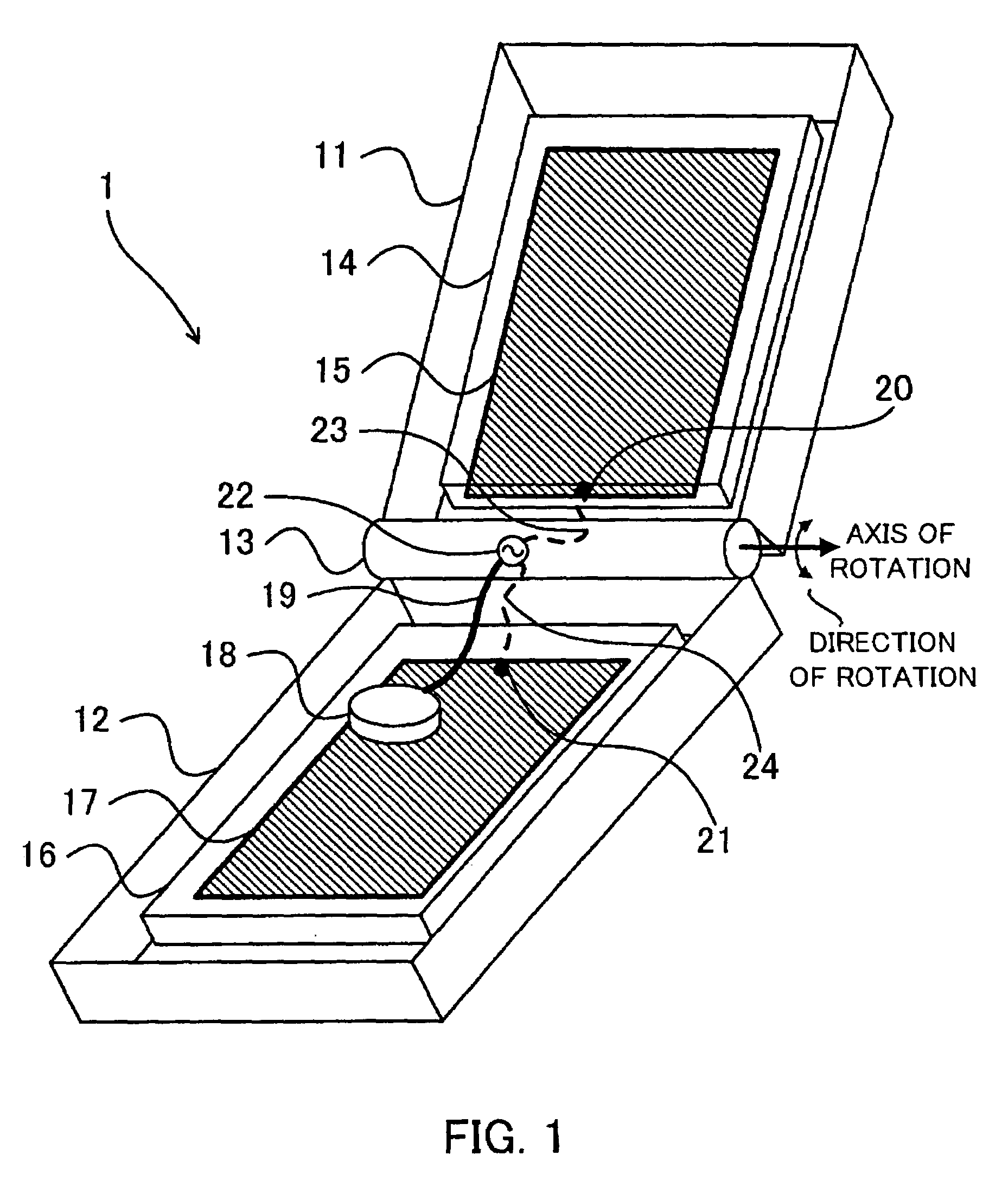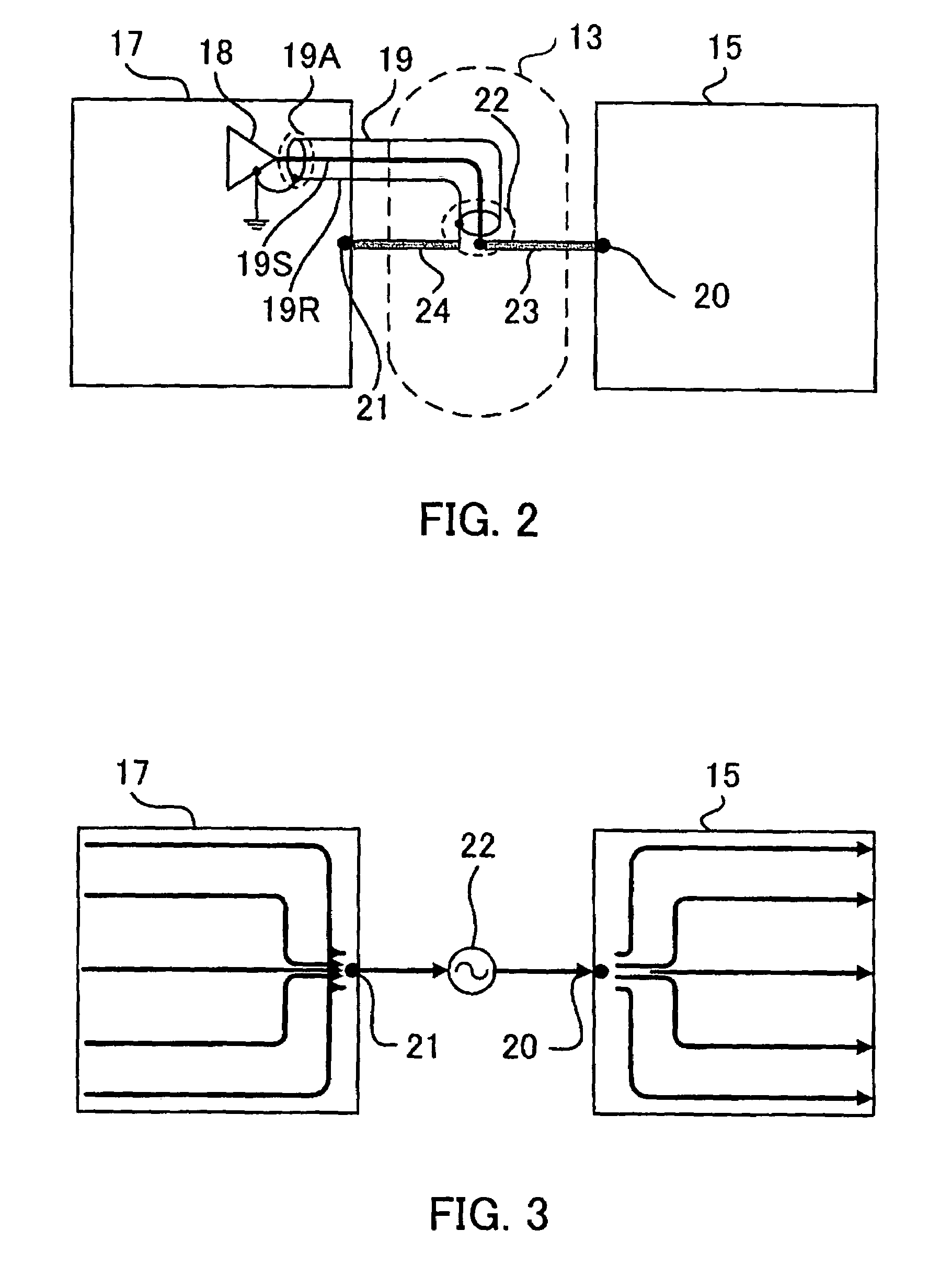Radio apparatus
a radio apparatus and antenna technology, applied in the direction of pivotable antennas, antenna details, antennas, etc., can solve the problems of inconvenient use of radio apparatuses with two or more narrow-band antennas, large size and complicated configuration, and difficulty in forming thin cases
- Summary
- Abstract
- Description
- Claims
- Application Information
AI Technical Summary
Benefits of technology
Problems solved by technology
Method used
Image
Examples
first embodiment
[0051] described above, the cases of the radio apparatus 1 may be made thinner and its antenna frequency range may be made broader than conventional ones by using the PCB ground patterns as the antenna elements. The shape of the connections from / to the feeding point may not be affected much by opening or closing the cases so that the antenna characteristic is stable.
[0052]A second embodiment of the present invention will be described with reference to FIG. 5 and FIG. 6. A radio apparatus in the second embodiment adopts a same configuration as the configuration of the radio apparatus 1 in the first embodiment shown in FIG. 1 that is referred to as necessary, except for connections around the feeding point 22.
[0053]FIG. 5 is a schematic diagram of an example of such connections. Each of portions given the reference numeral 13, 15, 17 through 19, 19A / 19S / 19R or 20 through 22 is a same as the corresponding one shown in FIG. 2, and its explanation is omitted. In FIG. 5, shown is a flexib...
second embodiment
[0056]FIG. 6 is a schematic diagram of another example of connections around the feeding point 22 in the Each of portions given the reference numeral 13, 15, 17, 18 or 20 through 22 is a same as the corresponding one shown in FIG. 2, and its explanation is omitted. In FIG. 6, shown is a flexible PCB 26 to connect the first PCB 14 (not shown) and the second PCB 16 (not shown) through the hinge part 13.
[0057]The flexible PCB 26 has a first printed pattern 26a to connect the first antenna element 15 and the feeding point 22 for a signal connection, and has a second printed pattern 26b to connect the second antenna element 17 and the feeding point 22 for a return connection.
[0058]The flexible PCB 26 includes a microstrip line 27 formed as a printed pattern and connected to the radio circuit 18 at an end thereof, and the other end of the microstrip line 27 is the feeding point 22. The microstrip line 27 includes a signal line and a return line.
[0059]The signal line of the microstrip lin...
third embodiment
[0065]FIG. 8 is a schematic diagram of another example of the connections around the feeding point 22 in the Each of portions given the reference numeral 13, 15, 17, 18, 19, 19A / 19S / 19R or 20 through 22 is a same as the corresponding one shown in FIG. 2, and its explanation is omitted. In FIG. 8, shown is a flexible PCB 29 to connect the first PCB 14 (not shown) and the second PCB 16 (not shown) through the hinge part 13.
[0066]The signal line 19S is connected to a printed pattern 29a of the flexible PCB 29 at the feeding point 22, and the printed pattern 29a is connected to the first antenna element 15 at the first connecting spot 20. The return line 19R is directly connected to the second antenna element 17 at the second connecting spot 21. In FIG. 8, the first antenna element 15 and the second antenna element 17 form an antenna equivalent to the antenna similarly formed in FIG. 7, while making use of a flexible PCB that is generally used in radio apparatus configurations with two...
PUM
 Login to View More
Login to View More Abstract
Description
Claims
Application Information
 Login to View More
Login to View More - R&D
- Intellectual Property
- Life Sciences
- Materials
- Tech Scout
- Unparalleled Data Quality
- Higher Quality Content
- 60% Fewer Hallucinations
Browse by: Latest US Patents, China's latest patents, Technical Efficacy Thesaurus, Application Domain, Technology Topic, Popular Technical Reports.
© 2025 PatSnap. All rights reserved.Legal|Privacy policy|Modern Slavery Act Transparency Statement|Sitemap|About US| Contact US: help@patsnap.com



